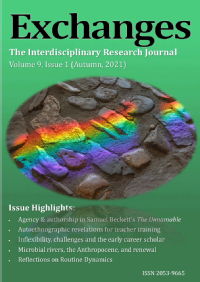Writing about web page https://exchanges.warwick.ac.uk/index.php/exchanges/guidance
What's an author to do when there's simply too much text to cram into a single article? Focus on what's the most important, advices Exchanges editor-in-chief.
---
I’ve been having an enjoyable and informative exchange today with a prospective author. They’ve an especially lengthy original piece which they’re considering submitting to Exchanges, which as it currently stands would be almost triple the size of a regular article. Far too big for us to consider, and I suspect, reading between the lines, it’s a version of a masters’ dissertation meaning they’re likely on the horns of that most typical dilemma for a nascent author: ‘But ALL OF IT is important!!’. I know, I’ve been there myself, in trying to rework a lengthy thesis chapter into a discrete article and becoming frustrated and dismayed in equal measure.
Given we try here at Exchanges, within a little flexibility, to stick to our word limits for our formats – for the sake our reviewers’ time and attention if nothing else – I’ve been offering the author some guidance on ways in which they might approach revising their original text into an article for the journal. I thought it might be worth sharing some of these thoughts here, for other prospective authors too.
For this enquirer, they were particularly wondering how they could possibly shoehorn in all the ‘core’ elements of a research article - literature reviews, methods and methodologies - within what they perceived as a very limited wordcount.
To paraphrase my (not that) old PhD Supervisor ‘Always focus in your writing on what you think is the most important or exciting element, and let the rest form around this’. I can’t argue with this approach, even if it means creating an article from the inside out, rather than a linear or skeletal framework approach. It does benefit the piece though in ensuring the most attention is paid, in terms of page landscape, to the crucial elements of what the author actually wants to say – outside of the supporting contextual scaffold .
As anyone who has read any of my professional pieces, I will freely confess as a wordsmith myself, I tend to write long rather than concisely. To quote my supervisor once more when at the point where I was looking at cutting around 25,000 words from my thesis ‘They’re not going to weigh it, but bringing a focus IS important’. Hence, looking at my writing with always the question of ‘is this bit important/exciting?’ in mind – and if not, wielding the editorial hatchet more severely has helped over the years. I guess my screenwriting training to ‘kill your darlings’ underlines this approach too: never be afraid to cut, cut and cut some more until you’re down to what really matters.
Of course, Exchanges gets all sorts and styles of articles from across the rainbow bridge of disciplinarity. Hence, it would be foolish to suggest there’s a single right or wrong way to formulate a winning piece. There isn’t. But one thing I’ve seen time and again, especially from first time authors, is a tendency to try and cram too many ideas, concepts or narratives into a single article. There’s an understandable fear within their relative publishing inexperience, that cutting any element will fatally wound their chance for publication. Hence, they clip words and phrases but remain timorous of cutting ‘core’ content.
In cutting down the word count, but still trying to include everything, these authors risk instead creating prose so dense or shorn of necessary contextualisation and signposting that it becomes near impossible to read. Reviewers have repeatedly picked up on this in pieces we’ve sent out for feedback, and understandably then demand extensive refinement and greater clarity be introduced. For a piece which can then become so muddled by attempting to be all things at once, this can present the author with a literal literary mountain to climb or syntactical swamp to traverse.
It is a far better approach, where sculpting an article based on a prior, unpublished lengthy work for authors to ask time and again ‘Am I trying to introduce one, two or even three different core ideas in this piece?’ Or even simply ‘what’s the elevator pitch for this article?’
Simply put, if you are unable to boil down your article’s core message to 25 words or fewer…chances are you’re on the verge of taking on a Sisyphean mountaineering challenge post-review! The more skilful and time-savvy approach, is always to recognise the power of publishing a singular piece with a masterful lone, clear concept or argument at its heart. Rather than one which attempt to a muddled jack of all trades.
Nothing is lost though in your condensation of text. Simply because any material you’ve judged as extraneous to your core can be utilised as the foundation for one or more follow-on articles. In this way, you can develop and build higher and further on the firm bedrock of your original piece. You will be beginning to create a discrete vision, a research narrative, and singular voice within the tapestry of your research and publications. This can go a long way towards forming the basis of a publications strategy, alongside establishing your unique contribution and insight within the wider research discourse.
It also serves to soften the admitted heart ache of culling thousands of words from your original piece, if you consider they are not redundant entirely, but the solid foundation of subsequent publication.
As always, I’m interested in our readers and authors’ thoughts on this issue, so please let me know in the comments below if you’ve any advice or insights to share on condensation of longer pieces into impactful articles!
 Gareth Johnson
Gareth Johnson

 Please wait - comments are loading
Please wait - comments are loading



 Loading…
Loading…

